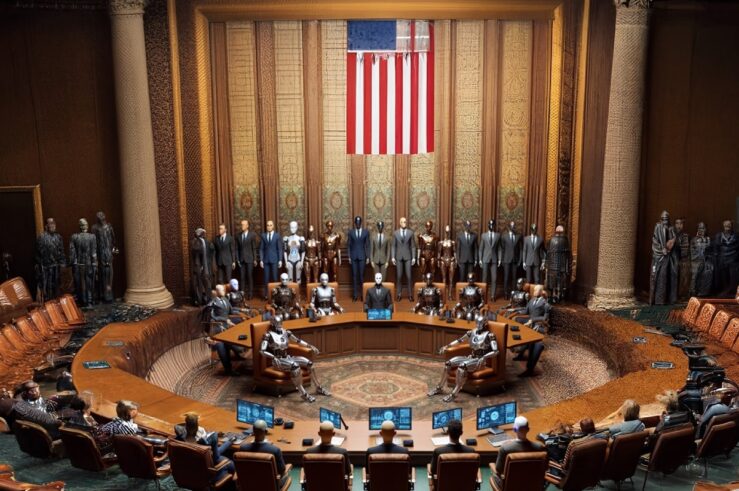On December 16, 2008, the FTC filed a complaint against Ovation Pharmaceuticals that challenged its 2006 acquisition of the drug Neoprofen from Abbott. (The acquisition had fallen beneath the HSR thresholds and thus was not subject to an HSR investigation prior to consummation). While the complaint and case itself raises some interesting issues which I will discuss below, the concurring statements of Commissioners Leibowitz and Rosch, particularly the theory laid out in Commissioner Rosch’s statement raises more interesting (and potentially troubling) issues – in particular the potential to substantially expand the scope of Section 7.
The complaint involves the acquisition by Ovation of its alleged only other competitor in the sale of drugs used to treat patent ductus arteriosis (PDA), a potentially life threatening heart condition in severely underweight newborn babies. Assuming the facts are as presented in the case (which I am sure defendants will contest), the complaint itself does not raise complex antitrust issues. Given the alleged facts, the acquisition would essentially be a merger to monopoly (at least until a generic version of Ovation’s product is on the market assuming one eventually enters) without any other projects apparently in the pipeline to treat this disease (perhaps not surprisingly given the relatively small number of patients per year).
Despite these seemingly routine antitrust issues, this case would be the first time the FTC has challenged in court an acquisition that at least at the time of the transaction involved potential competition. It is unclear, however, whether this case will provide much guidance in this area with regard to the types of matters the FTC routinely investigates and challenges in pharmaceutical acquisitions. First, this is an alleged merger to monopoly. Second, one of the products was already on the market and the other was fairly close to FDA approval (apparently already completing Phase III trials). Thus, the potential competition was relatively close to actually competition. Third, with no other products in the pipeline, the case raises no issue of whether the market would be narrower than all drugs used to treat a particular disease. However, there is likely to be at least some issue as to whether the products would be very close substitutes. Fourth, with hindsight, the drug not yet on the market was brought to market fairly quickly after the transaction and thus no tricky issues about innovation competition and whether one product would be cancelled or delayed are raised. Thus, if anything this appears to be a “poster child” for a potential competition case (particularly given the allegations about the increases in price). The FTC routinely investigates and challenges potential competition theories via consent matters that involve less relatively “clear cut” issues and thus it is not clear that will help inform how courts would view such cases.
Of more potential interest is the fact that the FTC is making an important part of its argument the alleged increase in price and is seeking disgorgement of profits gained from the transaction. The FTC is alleging that after the transaction Ovation raised the price of its own product (which was already on the market) from $36/vial to $500/vial – a huge increase. The challenge the FTC is likely to face and where economic testimony is likely to play a central role (as it did in Evanston), however, is attributing some or all of that price increase to the merger. There are at least reasons to think that there might be other reasons for the price increase. First, one would wonder why the threat of competition would keep prices low prior to the competitive drug actually being approved (presumably Ovation would have wanted to charge higher prices when it could and only drop prices when a new product was on the market particularly if the barriers to entry exist as are alleged in the Complaint). Second, I cannot think of an economic model where a duopoly would lead to a price less than 10% of the monopoly price when the two products involved are branded, are not likely perfect substitutes and almost certainly would not be sold only based on price. Thus, determining how much of the price increase can be attributed to the transaction may be challenging for the FTC and this issue will likely be a central role for the economic testimony (although such testimony will almost certainly include other issues as well).
This leads us to Commissioner Rosch’s theory (which is endorsed by Commissioner Leibowitz). Commissioner Rosch would also challenge Ovation’s original purchase of its product (Indocin) from Merck even though at that time Ovation had no horizontal or vertical relationship with the PDA market because Ovation raised the price when Merck had kept the price low. Ovation’s acquisition only changed who marketed and priced the product, not the number of competitors. In fact, at that time, Merck had a monopoly in the alleged market and this was unchanged by the acquisition. Commissioner Rosch’s theory is that something must have constrained Merck from charging higher prices for its product (he theorizes that perhaps it could be the reputation effects on other products in their portfolio) whereas Ovation did face such constraints and thus raised prices. Thus Commissioner Rosch’s theory appears to be that because the acquisition changed the incentives of the firm owning the monopoly such that it would fully exploit that monopoly this can be a Section 7 violation.
This theory seems far removed from the way we normally analyze merger cases and potentially would have the effect of raising antitrust concerns or at least an investigation with almost any transaction where one firm might be argued to have market power even though the structure of the industry (horizontally or vertically) is unchanged. While Commissioner Rosch highlights some potentially limiting principles, such as the fact that this is a consummated transaction, it is hard to see how this fact connects to why the transaction might violate Section 7 (versus potentially discretion as when to pursue the theory). Regardless of whether the merger was consummated, as discussed above, one would presumably need to show that the merger caused the price increase rather than other factors which is likely to be challenging, particularly in a non-horizontal deal.
Moreover, antitrust has generally not been about the exploitation of market power (i.e., charging above competitive prices) but rather the inappropriate acquisition or maintenance of that power. This focus has been for good reason as it prevents antitrust courts and regulators from the business of determining competitive prices and when exploitation of market power is a good thing (because it is the rewards for innovation for example) or a bad thing. Moreover, there is nothing that necessarily limits this theory to a merger but could theoretically be applied to anything that might allow a monopolist to raise price. While this could be a boon to economists it is not clear it is good policy. The FTC complaint does not espouse this theory so apparently some at the agency do not agree with Commissioner Rosch’s point of view (or they wished to keep the complaint more straightforward for the second acquisition). It will be interesting to see if this theory begins to appear in any other merger investigations.




